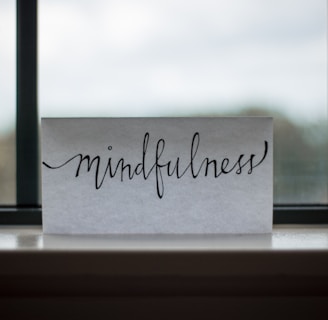Navigating the depths of Conscious and Sub-Conscious Mind
10/15/20233 min read


Introduction:
The human mind is a complex and fascinating realm that governs our thoughts, emotions, and behaviors. Within this intricate landscape, two fundamental components play a pivotal role in shaping our lives: the conscious and subconscious mind. Understanding the dynamics between these two layers can unlock the door to profound self-awareness and personal growth. In this article, we will embark on an enlightening journey to explore the conscious and subconscious mind, unveiling their mysteries and uncovering the ways they influence our daily existence.
The Conscious Mind: The Beacon of Awareness
Think of the conscious mind as the visible tip of an iceberg, the part that emerges above the water's surface. It's the domain of our awareness in our everyday lives. When we engage in rational thinking, critical analysis, and deliberate decision-making, we are actively employing our conscious mind. This realm is characterized by logic, reasoning, and the ability to make conscious choices.
The conscious mind is the part of our mental awareness that we use in our everyday waking life. It's the part of our mind that we are actively aware of and that we use for thinking, reasoning, decision-making, and perceiving the world around us. When you are awake and alert, your conscious mind is active. It's the part of your mind that you are actively using to think, reason, and make choices. For example, when you decide what to wear, what to eat, or how to solve a problem, you are using your conscious mind.
The conscious mind is associated with logical thinking and reasoning. It allows you to analyze situations, make plans, and solve problems in a deliberate and systematic way. Conscious decision-making is a key function of this part of the mind. When you make choices, weigh options, and consider consequences, you are engaging your conscious mind.
Your conscious mind is responsible for your perception of the world around you. It processes sensory information, allowing you to see, hear, taste, touch, and smell things consciously. Your immediate, short-term memory is part of your conscious mind. It's where you temporarily hold information you need for tasks like following directions or having a conversation. When you concentrate on a specific task or thought, you are using your conscious mind to maintain focused attention. The conscious mind also plays a role in self-awareness. It allows you to reflect on your thoughts, emotions, and actions and to have a sense of self-identity. The conscious mind is like the spotlight of your mental stage. It's the part of your mind that you are aware of when you are actively thinking, making decisions, and engaging with the world around you in your waking moments.
The Subconscious Mind: The Hidden Reservoir
Now, let's dive beneath the surface of our awareness to discover the subconscious mind. This hidden reservoir holds our memories, emotions, and deeply ingrained patterns of thinking and behavior. Many of our habits, fears, and automatic reactions originate from the subconscious. It operates quietly in the background, shaping our responses without our conscious recognition.
The subconscious mind is a part of our mental framework that operates below the level of our conscious awareness. It's like a hidden reservoir of thoughts, memories, emotions, and automatic behaviors that influence our actions and reactions. The subconscious mind processes a vast amount of information without us consciously being aware of it. It handles tasks like regulating bodily functions (heartbeat, breathing), storing long-term memories, and managing automatic habits.
Many of our memories and emotions are stored in the subconscious. These memories can be from our early childhood, and they often shape our reactions and behaviors in the present, even if we don't consciously remember them. The subconscious mind is responsible for our habits and routines. Once we learn something, like riding a bike or typing, it becomes a subconscious process. It also stores patterns of behavior and thought that we've developed over time.
The subconscious mind can influence our conscious thoughts and actions. For example, if you have a subconscious fear of public speaking, it can make you feel nervous when you have to speak in front of a group, even if you consciously want to do it. The subconscious mind often becomes more active during sleep, giving rise to dreams. Dreams can sometimes bring to the surface thoughts and emotions that were buried in the subconscious. In essence, the subconscious mind is like the backstage of our mental theater. It quietly works behind the scenes, influencing our conscious thoughts and actions, and holds a treasure trove of memories and experiences that shape our lives.
Practices like meditation and self-reflection can help us access and understand the subconscious mind. By exploring this hidden realm, we can gain insights into our behavior, emotions, and thought patterns, leading to personal growth and self-awareness.
The conscious and subconscious mind are intricately linked, guiding our perceptions, decisions, and actions. By embarking on a journey to understand our subconscious through practices like meditation and self-reflection, we embark on a quest of profound self-discovery and personal growth. As we become more attuned to our inner world, we gain the ability to lead a life that is purposeful and aligned with our deepest desires and aspirations. Ultimately, the exploration of these mental realms offers us the key to living an intentional and enriching life.
